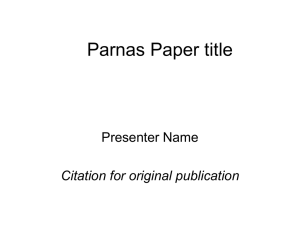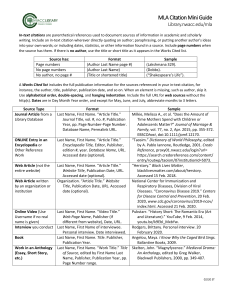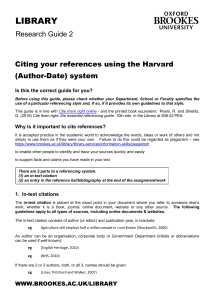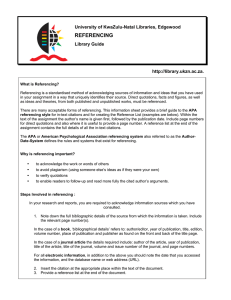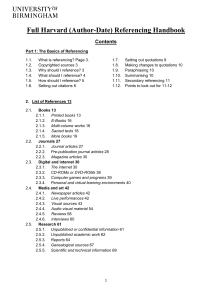Research Project Reference List
advertisement
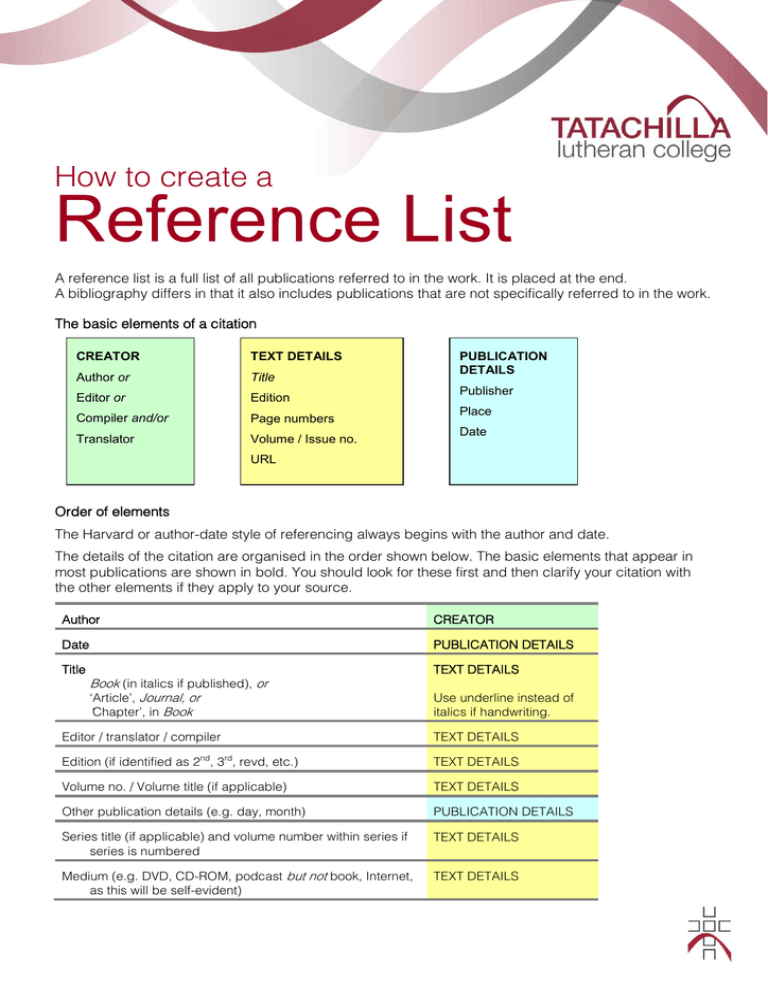
How to create a Reference List A reference list is a full list of all publications referred to in the work. It is placed at the end. A bibliography differs in that it also includes publications that are not specifically referred to in the work. The basic elements of a citation CREATOR TEXT DETAILS Author or Title Editor or Edition Compiler and/or Page numbers Translator Volume / Issue no. PUBLICATION DETAILS Publisher Place Date URL Order of elements The Harvard or author-date style of referencing always begins with the author and date. The details of the citation are organised in the order shown below. The basic elements that appear in most publications are shown in bold. You should look for these first and then clarify your citation with the other elements if they apply to your source. Author CREATOR Date PUBLICATION DETAILS Title Book (in italics if published), or ‘Article’, Journal, or ‘Chapter’, in Book TEXT DETAILS Use underline instead of italics if handwriting. Editor / translator / compiler TEXT DETAILS Edition (if identified as 2nd, 3rd, revd, etc.) TEXT DETAILS Volume no. / Volume title (if applicable) TEXT DETAILS Other publication details (e.g. day, month) PUBLICATION DETAILS Series title (if applicable) and volume number within series if series is numbered TEXT DETAILS Medium (e.g. DVD, CD-ROM, podcast but not book, Internet, as this will be self-evident) TEXT DETAILS Publisher, place PUBLICATION DETAILS Page number or numbers (if a chapter in a book or article in newspaper/journal) TEXT DETAILS URL TEXT DETAILS Access date PUBLICATION DETAILS Referencing guides often use slightly different punctuation. You should use the same punctuation style consistently throughout your list. A style that is simple to follow and widely used in Australia is that described in the Style manual for authors, editors and printers (2002), in which the elements are divided by a comma and finished with a full stop. Order the list alphabetically by the first word or words of the entry, ignoring definite and indefinite articles (a, an, the). Cite and reference online sources that are like print sources, but are available on the Internet, in the same way you would cite the print source, but add the URL and access date. Examples are: articles in an online journal online books newspaper and magazine articles public documents. Some types of material need to be referenced only in the main body of your work Provided you give all details in the citation within the text, certain types of material need not be included in the reference list or bibliography. This is because they may be: informally published on the Internet with no clear indication of author, title, publisher, or date (i.e. there is no stable identifying information), e.g. electronic mailing lists, institutional or personal websites Incorporate as much information as you can to enable the reader to find it, including the URL and access date unpublished, private, and not available to others in a non-standard format, being more suited to a footnote or inclusion in the text classical works, from which quotations may be identified by chapter/act, verse, and line rather than page number, in any edition. Incorporate the details into your sentence wherever possible. If this will be too disruptive to the sentence, include them in a footnote. If you refer to such a source more than once in your work, you may also include it in the reference list.
